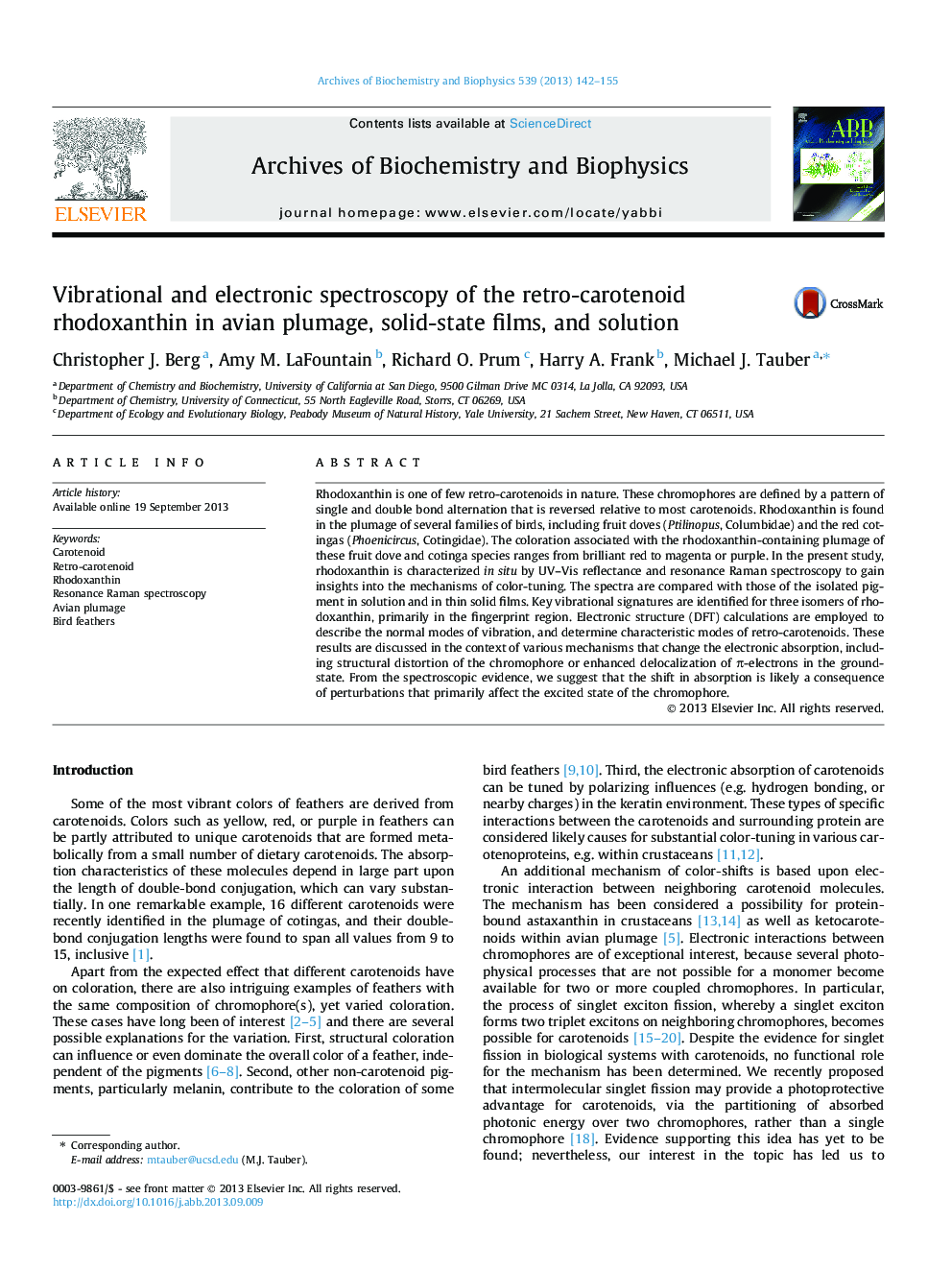| کد مقاله | کد نشریه | سال انتشار | مقاله انگلیسی | نسخه تمام متن |
|---|---|---|---|---|
| 1925307 | 1536360 | 2013 | 14 صفحه PDF | دانلود رایگان |

• Resonance Raman spectra of rhodoxanthin, a retro-carotenoid, are reported.
• Spectra of rhodoxanthin in feathers are compared with those of the isolated pigment.
• Vibrational spectra are compared with electronic structure calculations.
• The absorption of rhodoxanthin in feathers is probed via reflectance spectroscopy.
• Shifts in absorption of rhodoxanthin are attributed to excited-state perturbations.
Rhodoxanthin is one of few retro-carotenoids in nature. These chromophores are defined by a pattern of single and double bond alternation that is reversed relative to most carotenoids. Rhodoxanthin is found in the plumage of several families of birds, including fruit doves (Ptilinopus, Columbidae) and the red cotingas (Phoenicircus, Cotingidae). The coloration associated with the rhodoxanthin-containing plumage of these fruit dove and cotinga species ranges from brilliant red to magenta or purple. In the present study, rhodoxanthin is characterized in situ by UV–Vis reflectance and resonance Raman spectroscopy to gain insights into the mechanisms of color-tuning. The spectra are compared with those of the isolated pigment in solution and in thin solid films. Key vibrational signatures are identified for three isomers of rhodoxanthin, primarily in the fingerprint region. Electronic structure (DFT) calculations are employed to describe the normal modes of vibration, and determine characteristic modes of retro-carotenoids. These results are discussed in the context of various mechanisms that change the electronic absorption, including structural distortion of the chromophore or enhanced delocalization of π-electrons in the ground-state. From the spectroscopic evidence, we suggest that the shift in absorption is likely a consequence of perturbations that primarily affect the excited state of the chromophore.
Journal: Archives of Biochemistry and Biophysics - Volume 539, Issue 2, 15 November 2013, Pages 142–155